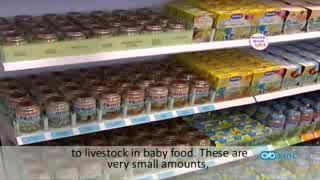The "precise, simple and fast" methodology has been validated by analysing twelve meat products (cow, pig or poultry) and nine milk powder samples. Data indicate that concentrations of veterinary drugs vary from 0.5 to 25.2 µg/kg in the former and 1.2 to 26.2 µg/kg in the latter "although with more samples, more conclusive results would be obtained".
Higher concentrations in poultry products
Sulfonamides, macrolides and other antibiotic traces have been found, as well as anthelmintics (anti-worm) and fungicides. In total, they found five veterinary drugs in milk powder and ten in meat products, especially if they were chicken or other poultry.
The study that is published in the Food Chemistry journal, suggests that this could be because in some farms there is no thorough control on the administration of drugs to animals.
Until now, the European Commission has regulated the levels of pesticides and other substances in cereal based foods for children and babies, but not in animal based foods. As a result of the lack of regulation, a zero tolerance policy is usually applied to veterinary drugs in food, as they can cause allergic reactions, resistance to antibiotics and other health problems.

A new method detects traces of veterinary drugs in baby food.
(Photo Credit: SINC)

The amount of veterinary drugs detected in baby food is very low and not worrying, but it shows a need for control.
(Photo Credit: SINC)
Source: FECYT - Spanish Foundation for Science and Technology